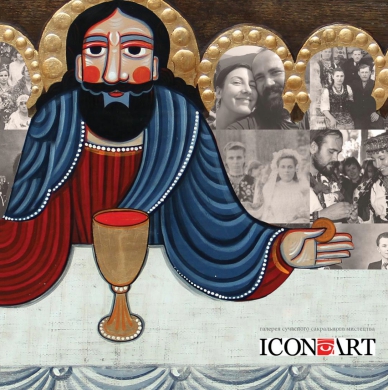Abraham begat Isaac; and Isaac begat Jacob; and Jacob begat Judas and his brethren;
And Judas begat Phares and Zara of Thamar; and Phares begat Esrom; and Esrom begat Aram;
And Aram begat Aminadab; and Aminadab begat Naasson; and Naasson begat Salmon;
And Salmon begat Booz of Rachab; and Booz begat Obed of Ruth; and Obed begat Jesse;
And Jesse begat David the king; and David the king begat Solomon of her that had been the wife of Urias;
And Solomon begat Roboam; and Roboam begat Abia; and Abia begat Asa;
And Asa begat Josaphat; and Josaphat begat Joram; and Joram begat Ozias;
And Ozias begat Joatham; and Joatham begat Achaz; and Achaz begat Ezekias;
And Ezekias begat Manasses; and Manasses begat Amon; and Amon begat Josias;
And Josias begat Jechonias and his brethren, about the time they were carried away to Babylon:
And after they were brought to Babylon, Jechonias begat Salathiel; and Salathiel begat Zorobabel;
And Zorobabel begat Abiud; and Abiud begat Eliakim; and Eliakim begat Azor;
And Azor begat Sadoc; and Sadoc begat Achim; and Achim begat Eliud;
And Eliud begat Eleazar; and Eleazar begat Matthan; and Matthan begat Jacob;
And Jacob begat Joseph the husband of Mary, of whom was born Jesus, who is called Christ.
(Matthew 1:2-16)
When during the Sunday Liturgy before Christmas in every church community the priest holily reads the first chapter of the Gospel of Matthew, the meditative sounds of the archaic names from the past fill up the sacred space of the God’s Home, - and different thoughts come to our heads. From the deepness of our memory emerge the names of our friends and relatives, grandpas and grandmas, ancestors; recent events and old stories…or through the shroud of the mystical sucker the living images of our faith spring up: here the saint guests visit Abraham – he quickly sets the table; and here Ruth after the husband’s death adopts the religion her the mother-in-law, and with the wish to carry on she moved to Bethlehem; here the God’s Ark coming back to the David town and happy he is dancing in front of Him only in shirt; and here Solomon hosts in his house Queen of Sheba and has with her the smart conversations; here after few generations, after the Babylon transmigration, old Mattan hold the hand his grandson Josef, and when he grows up, he will be sleeping a strange dream; and will be a growing up of Jesus in Egypt, triumphal entry into Jerusalem and Mother’s tears near death body of her Son… Every name opens for our imaginatione a new one story from our past, and every story revives comes alive in Christian images, which were reproduced by artists on the walls of the houses and churches, on the pages of manuscripts and old books, on the boards and canvas, like as on the photos.
When did those pictures start to appear in the home space? It is difficult to say exactly. Because in the houses of the first Christians there were already icons that protected them from evil. Also, people of the Middle Ages kept a special close contact with the saints, they brought pieces of relics or votive crosses from the pilgrimage to the home. Then they began to bring home small printable engravings with images of favorite patron saints from the festive church fairs, from which later the bright beauty of folk house icons, painted by local self-taught masters, was formed: here the flowers of Varvara and Paraskeva are concerned with women\'s affairs, Archangel Michael keeps home, St. Nicholas takes care of children, Saint George helps with the housework, Mother of God with Child opens the Mercy Doors, Jesus sits with family for supper. Birth and death, marriage and baptism, holidays and everyday life occur under the watchful eye of the saints. And it is hard to believe that the story about Jesus is more than 2000 years old, St. George lived in the far Cappadocia, and nobody expected snow at Christmas in Bethlehem. Eventually technically unpretentious, but filled with the power of God\'s Mercy oil paintings appear at homes. So, doesn’t everyone recognize the mystical images of the burning God\'s Sacred Heart from the revelations of the saints Margaret Mary Alacoque and Lucius in the picturesque ubiquitous home icon – The Most Sacred Heart of Jesus Christ and the Immaculate Heart of the Virgin Mary, decorated with herbs, paper flowers and glistening candy foil.
It is also difficult to say when Roman Zilinko, the son of artists Igor and Orysia from Ternopil, Olia’s husband, to whom all of his Mother of God are like, Dzwinka’s and Darusia’s father, for whom he created his first Christmas crib, researcher of church history and Ukrainian icon painting, collector of folk art, curator of artistic projects, began to study Ukrainian tradition of icon painting not only through the word but also through creation of the image. Probably, the desire to literally understand the work of the old masters became important here; and the desire to revive the search in contemporary sacred art with the values of Ukrainian folk icon-painting, unfairly deprived of attention; and the need to engage in the local tradition of their own conscious search for a balance between popular and professional culture, new compositional designs and vivid colored accents... Or maybe it was still a vital internal necessity, on which responds everyone who ever looked at Roman’s God, with such a sincere and good joy as if he had seen an old friend.
Maria Tsymbalista
